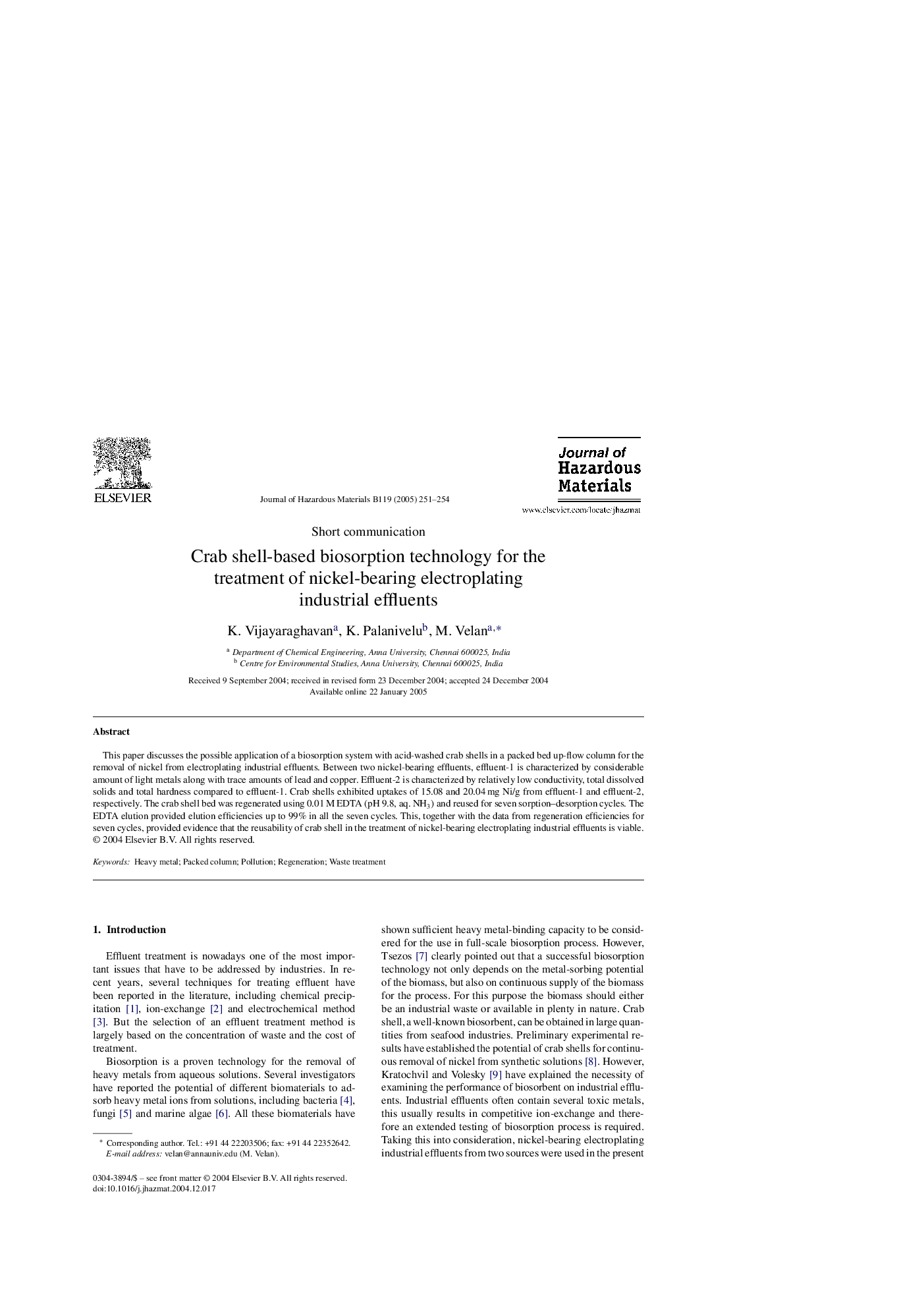| Article ID | Journal | Published Year | Pages | File Type |
|---|---|---|---|---|
| 9674365 | Journal of Hazardous Materials | 2005 | 4 Pages |
Abstract
This paper discusses the possible application of a biosorption system with acid-washed crab shells in a packed bed up-flow column for the removal of nickel from electroplating industrial effluents. Between two nickel-bearing effluents, effluent-1 is characterized by considerable amount of light metals along with trace amounts of lead and copper. Effluent-2 is characterized by relatively low conductivity, total dissolved solids and total hardness compared to effluent-1. Crab shells exhibited uptakes of 15.08 and 20.04Â mg Ni/g from effluent-1 and effluent-2, respectively. The crab shell bed was regenerated using 0.01Â M EDTA (pH 9.8, aq. NH3) and reused for seven sorption-desorption cycles. The EDTA elution provided elution efficiencies up to 99% in all the seven cycles. This, together with the data from regeneration efficiencies for seven cycles, provided evidence that the reusability of crab shell in the treatment of nickel-bearing electroplating industrial effluents is viable.
Related Topics
Physical Sciences and Engineering
Chemical Engineering
Chemical Health and Safety
Authors
K. Vijayaraghavan, K. Palanivelu, M. Velan,
